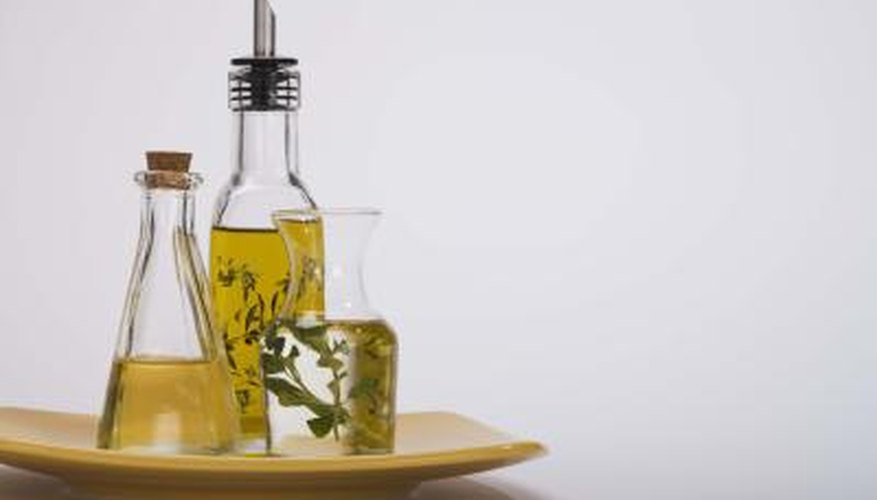Olive oil, which is cold-pressed from the fruit of the olive tree, is one of nature's powerhouses when it comes to monounsaturated, or healthy, fats. With regular use, consumption of olive oil is thought to extend life, and olive oil production has become a £13 billion world industry, according to the Olives Australia website. The lifespan of an olive tree can reach 2,000 years, if the tree is healthy, so diagnosing and correcting problems can ensure that your olive tree or trees outlive you to produce for future generations.
About Olive Trees
The olive tree is one of the hardiest trees around, making it ideal for any gardener. They are not picky about their soil, or weather conditions such as heat and cold, drought or wind. They make excellent windbreaks when planted in groves, and since they do not shed leaves or bark they are a tidy addition to your landscaping projects that require little maintenance. If you are growing olive trees for their commercially viable fruit, know that a properly pruned and fertilised tree can produce large crops for up to 100 years.
- The olive tree is one of the hardiest trees around, making it ideal for any gardener.
- They make excellent windbreaks when planted in groves, and since they do not shed leaves or bark they are a tidy addition to your landscaping projects that require little maintenance.
Yellow Leaves
One sign that you may have a problem on your hands is when you find that the silvery grey-green foliage of your tree is yellowing. Yellow leaves on olive trees are problematic because they can be a sign that the tree is deficient in nitrogen, or may have contracted a fungal infection. Olive trees are evergreens to temperatures of -12.2 degrees Celsius when plants are mature, so any change in foliage colour should have you investigating the matter.
Nitrogen
Nitrogen is a macronutrient easily leached from the soil by water. Plants with nitrogen deficiency show a yellowing of the leaves from bottom to top. Top dressing your olive tree with manure or a commercially available high-nitrogen fertiliser once a year in the spring can eliminate the yellowing of your olive leaves. Also, be sure to incorporate manure into the soil upon planting new trees.
- Nitrogen is a macronutrient easily leached from the soil by water.
Diseases
Two diseases in olive trees that cause yellow, ugly leaves are fairly common and can be detrimental to your tree if left untreated. Olive leaf spot, more commonly called peacock spot, is a fungus that attacks olive trees worldwide. Identifiable by black or grey spots surrounded by yellow halos, peacock spot infections are sporadic, and may take several years to become noticeable. Some of the yellow leaves fall from the trees, but those that do not harbour the fungus so that it continues to spread, ultimately causing defoliation and death of the tree. Treat the tree with copper fungicides twice yearly in any trees showing symptoms of this disease to keep it in check. Also, check trees for cercospora leaf spot, which is a fungus that appears on the underside of the leaves, causing the leaves to yellow and die. Some leaves that appear unaffected may also drop from the tree. Treat as you would for peacock spot.
- Two diseases in olive trees that cause yellow, ugly leaves are fairly common and can be detrimental to your tree if left untreated.
- Identifiable by black or grey spots surrounded by yellow halos, peacock spot infections are sporadic, and may take several years to become noticeable.
